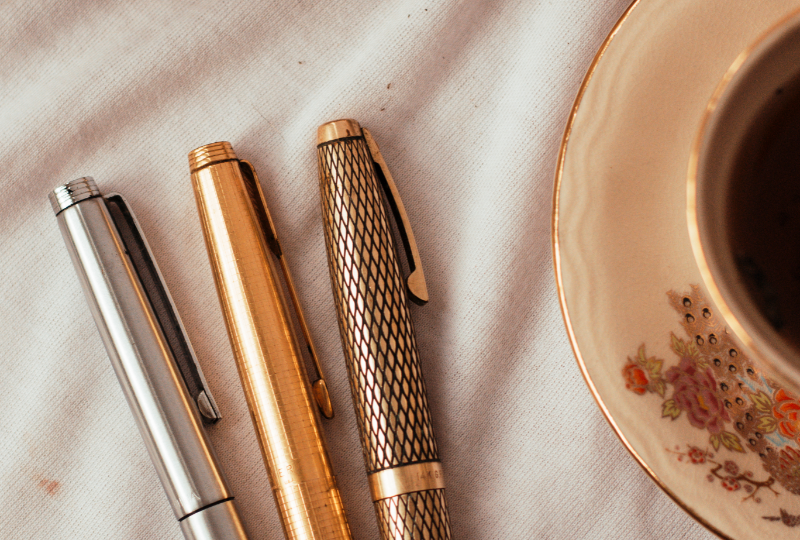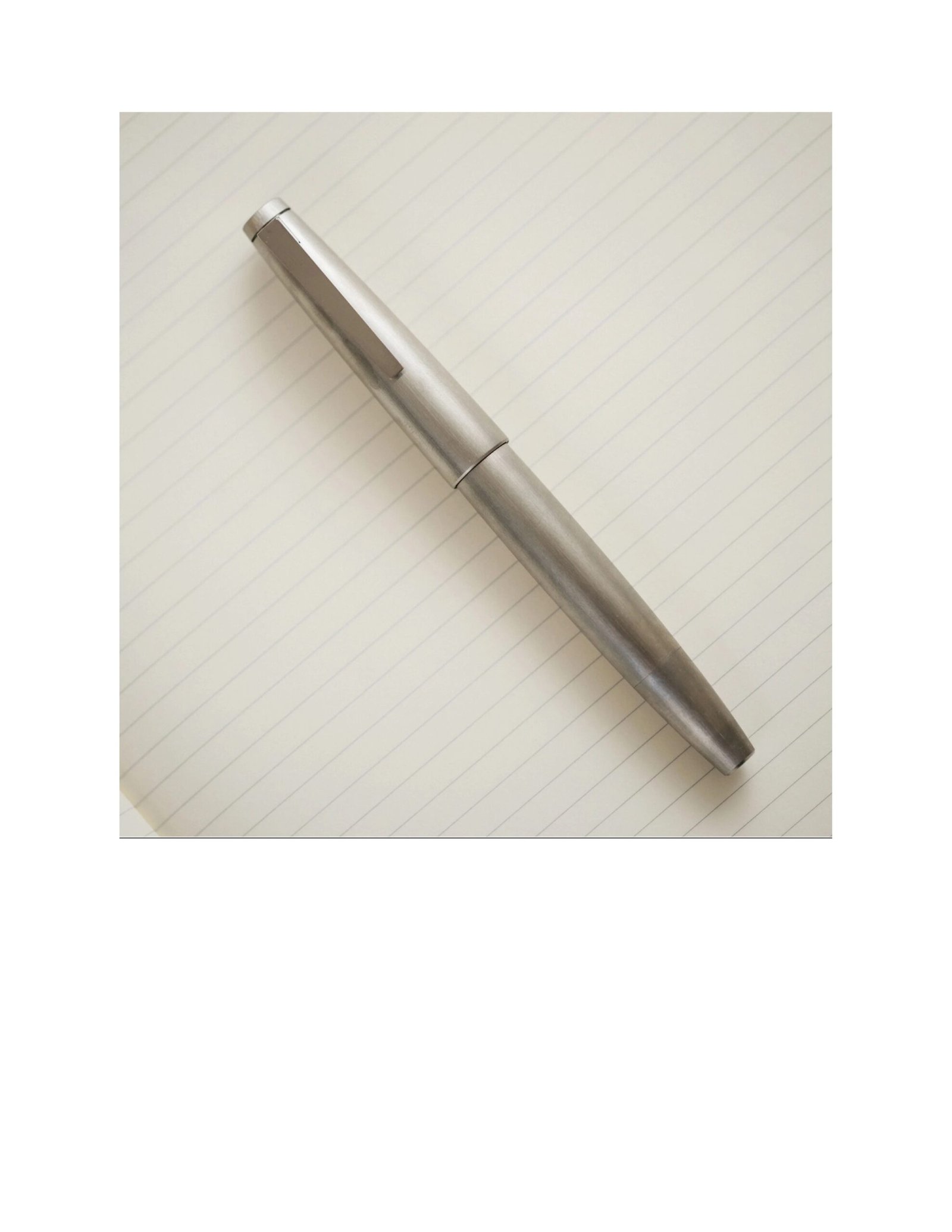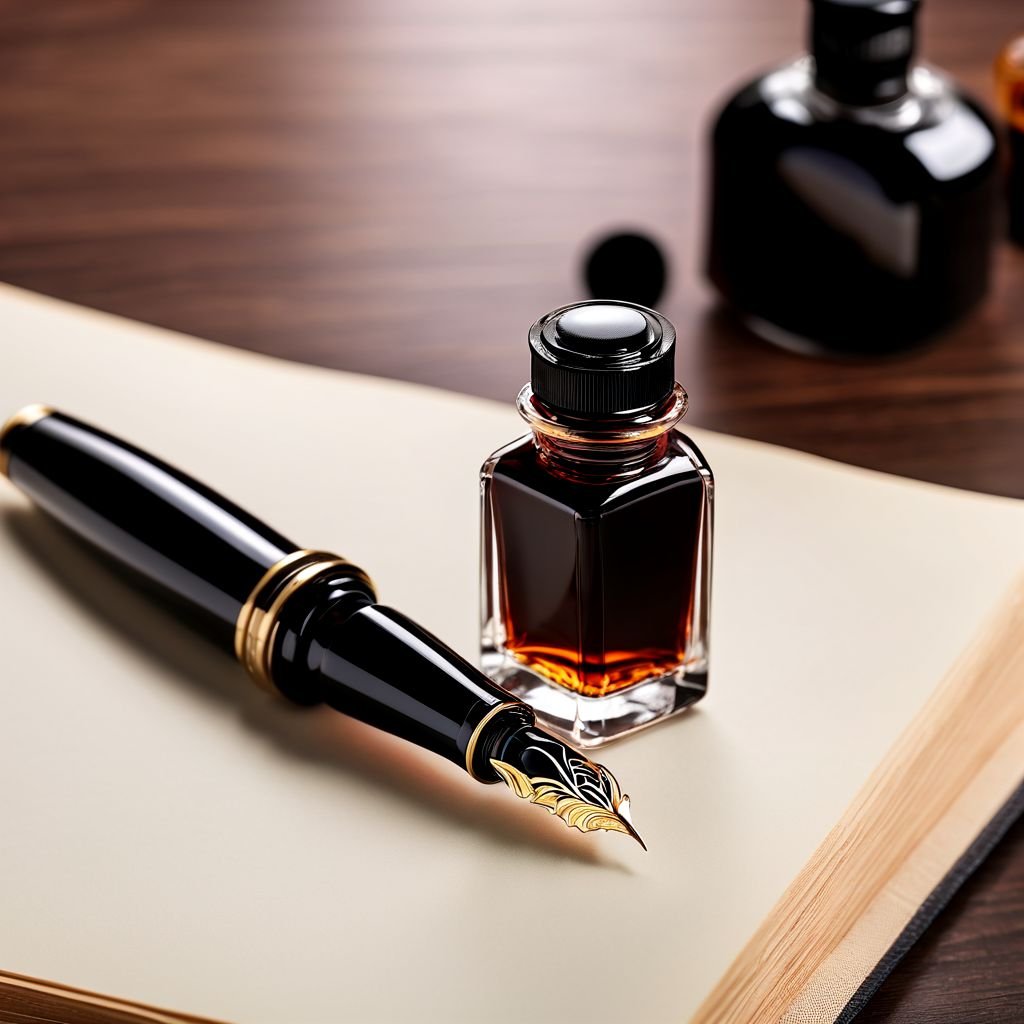7 Essential Tips for Beginners to Master Fountain Pen Writing
January 25, 2024 | by cajunpenman.com

Are you a fountain pen enthusiast looking to refine your writing skills? Perhaps you’ve recently acquired a fountain pen and find yourself grappling with pen control and ink flow. Don’t fret! In this article, we will explore seven essential tips that will help beginners like you master the art of fountain pen writing. Whether you’re a curious novice or an aspiring calligrapher, these tips are designed to elevate your skills and take your penmanship to new heights. So, grab your favorite fountain pen and get ready to harness its full potential – because we’re about to delve into the world of fountain pen mastery. From choosing the right pen to perfecting your grip and understanding ink types, we’ve got you covered. Whether you’re aiming to leave a lasting impression or simply enjoy the beauty of elegant handwriting, these tips will set you on a path towards excellence. Let’s embark on this journey together and unlock the secrets of fountain pen writing.,
Choosing the Right Fountain Pen
Now that you’ve embarked on your journey towards fountain pen mastery, it’s time to explore an important aspect of this craft – choosing the right fountain pen. With a multitude of options available in the market, selecting the perfect pen can be a daunting task. However, fear not! We’ve got some valuable insights to help you make an informed decision.
First and foremost, consider the nib size. The nib is the metal tip of the pen that comes into contact with the paper. It plays a crucial role in determining the thickness of your lines, the smoothness of your writing, and the overall feel of the pen. If you have small handwriting or prefer a finer line, opt for a pen with a fine or extra fine nib. On the other hand, if you have larger handwriting or like bolder lines, a medium or broad nib might be more suitable. Experimenting with different nib sizes will allow you to find the one that perfectly complements your writing style.
Next, think about the material and weight of the pen. Fountain pens come in various materials, such as plastic, metal, or even precious metals like gold or silver. Each material has its own unique feel and aesthetic appeal. Consider whether you prefer a lightweight pen for effortless movement or a heavier pen for a more substantial grip. Additionally, pay attention to the overall balance of the pen – it should feel comfortable and well-balanced in your hand, as this will greatly impact your writing experience.
Another important aspect to consider is the filling mechanism. Fountain pens can be filled in different ways, including cartridges, converters, or piston mechanisms. Cartridges are disposable ink containers that can be easily replaced, while converters allow you to refill the pen using bottled ink. Piston mechanisms, on the other hand, use a built-in piston to draw ink directly from a bottle. Think about your personal preferences and convenience when choosing the filling mechanism that suits you best.
Lastly, don’t forget to take your budget into account. Fountain pens can range from affordable options to luxurious collector’s items. Determine your budget and find a pen that fits within your price range without compromising on quality. Remember, the price tag doesn’t always determine the performance of the pen – there are exceptional pens available at every price point.
By considering factors such as nib size, material and weight, filling mechanism, and budget, you can confidently choose the right fountain pen that will enhance your writing experience. Remember, the perfect pen is an extension of your creativity and individuality, so select one that feels right and inspires you to unleash your inner wordsmith. Now that you have the knowledge to make an informed choice, let’s move on to exploring the fascinating world of ink types and colors.,
Understanding Ink Types and Colors
Now that you have chosen the perfect fountain pen that suits your preferences and requirements, it’s time to dive into the captivating realm of ink types and colors. The ink you select can greatly impact your writing experience, allowing you to express your thoughts and ideas with a touch of personal flair. So, let’s explore the various ink options available and how they can enhance your penmanship.
Firstly, let’s talk about ink types. Fountain pen ink generally falls into two categories: dye-based and pigment-based. Dye-based inks offer vibrant colors and are known for their smooth flow, making them a popular choice among writers. They are water-soluble, which means they can easily be cleaned from your pen and paper. On the other hand, pigment-based inks are made with finely ground pigments instead of dyes. These inks tend to be more resistant to water and fading, resulting in rich and long-lasting writing. Additionally, pigment-based inks often work well on different types of paper, making them versatile for various writing projects.
Now, let’s move on to ink colors. The possibilities are virtually endless, with a vast array of colors available to suit every mood and style. Traditional hues like blue and black are timeless classics that exude elegance and professionalism. They are perfect for formal or professional writing, adding a touch of sophistication to your words. If you’re feeling adventurous, you can explore a world of vibrant and unique colors, from deep purples to shimmering golds. Experimenting with different colors can add a playful and creative element to your writing, allowing you to personalize your work and make it truly your own.
Understanding the different ink types and colors is crucial in finding the perfect match for your writing needs. Whether you prefer the versatility of dye-based inks or the durability of pigment-based inks, and whether you lean towards classic blues or bold and vibrant shades, selecting the right ink will enhance your overall writing experience. So, now that you have a grasp on ink varieties, let’s move on to the next essential aspect of mastering fountain pen writing: proper grip and posture.,
Proper Grip and Posture
Understanding the different ink types and colors is crucial in finding the perfect match for your writing needs. Whether you prefer the versatility of dye-based inks or the durability of pigment-based inks, and whether you lean towards classic blues or bold and vibrant shades, selecting the right ink will enhance your overall writing experience. So, now that you have a grasp on ink varieties, let’s move on to the next essential aspect of mastering fountain pen writing: proper grip and posture.
Proper grip and posture play a pivotal role in achieving smooth and controlled penmanship. When it comes to holding a fountain pen, finding a grip that feels comfortable and natural to you is key. Most experts suggest holding the pen in a tripod grip, where you grip the pen between your thumb and index finger, with your middle finger providing support. This grip allows for easy movement and control, reducing strain on your hand and wrist.
In addition to the grip, maintaining a relaxed posture while writing is equally important. Sit up straight with your feet flat on the ground and shoulders relaxed. Keep your forearm parallel to the writing surface and avoid placing too much pressure on the pen. Writing with a light touch will prevent excessive strain and help you achieve more graceful and consistent lines.
Proper grip and posture set the foundation for comfortable and efficient writing, allowing you to maintain control over your pen movements. Once you have established a good grip and posture, you can move on to the next aspect of honing your fountain pen skills: maintaining a consistent writing pressure.,
Maintaining a Consistent Writing Pressure
Maintaining a consistent writing pressure is another key aspect to consider when mastering fountain pen writing. Just like the proper grip and posture, this element plays a crucial role in achieving smooth and elegant lines on paper. By exerting uniform pressure on your pen, you can ensure a consistent flow of ink and avoid any variations in line thickness.
To maintain a consistent writing pressure, it’s important to find the right balance between gripping the pen too tightly and applying too little pressure. Squeezing the pen too tightly can lead to fatigue and cramping, while holding it too lightly may result in inconsistent ink flow and faint lines. The goal is to achieve a relaxed but firm grip that allows for smooth movements and consistent writing.
In addition to the grip, maintaining a relaxed posture while writing is equally important. Sit up straight with your feet flat on the ground and shoulders relaxed. Keep your forearm parallel to the writing surface and avoid placing too much pressure on the pen. Writing with a light touch will prevent excessive strain and help you achieve more graceful and consistent lines.
Proper grip and posture set the foundation for comfortable and efficient writing, allowing you to maintain control over your pen movements. Once you have established a good grip and posture, you can move on to the next aspect of honing your fountain pen skills: experimenting with different paper. By trying out various types of paper, you can find the perfect match that compliments your fountain pen and enhances your writing experience.,
Experimenting with Different Paper
Proper grip and posture set the foundation for comfortable and efficient writing, allowing you to maintain control over your pen movements. Once you have established a good grip and posture, you can move on to the next aspect of honing your fountain pen skills: experimenting with different paper. By trying out various types of paper, you can find the perfect match that compliments your fountain pen and enhances your writing experience.
Different types of paper have different textures, thicknesses, and absorbency levels. These factors can significantly impact your writing experience with a fountain pen. For instance, smooth paper allows the pen nib to glide effortlessly across the surface, resulting in clean and crisp lines. On the other hand, textured paper can add a unique character to your writing, giving it a more vintage or artistic feel.
When experimenting with different types of paper, consider the weight and thickness as well. Heavier paper tends to be more durable and resistant to bleed-through or feathering, ensuring that your writing stays clear and legible. Thicker paper also provides a more substantial feel, adding to the overall experience of writing with a fountain pen.
In addition to texture and weight, pay attention to the paper’s absorbency. Some papers have a coating that prevents ink from being quickly absorbed, allowing it to dry more slowly and reducing the chances of smudging. Others may have higher absorbency, absorbing the ink quickly and preventing it from pooling on the surface.
To find the perfect match for your fountain pen, consider investing in a variety of paper samples or notebooks specifically designed for fountain pen use. Take the time to write on each type of paper and observe how the ink interacts with the surface. Notice the line quality, drying time, and overall feel of the writing experience. You may discover a particular paper that enhances the flow of ink and produces the desired effect for your writing style.
Experimenting with different paper not only adds an element of fun to your fountain pen journey but also allows you to tailor your writing experience to your preferences. Once you have found the perfect paper match, you can fully immerse yourself in the joy of writing with your fountain pen.
Now that you have mastered the art of finding the right paper for your fountain pen, it’s important to understand the significance of regular cleaning.,
The Importance of Regular Cleaning
Now that you have mastered the art of finding the right paper for your fountain pen, it’s important to understand the significance of regular cleaning. Just like any other tool or device, fountain pens require proper maintenance to ensure optimal performance and longevity. Neglecting to clean your pen regularly can lead to ink flow issues, clogged feeds, and even potential damage to the nib.
Regular cleaning not only keeps your pen in excellent working condition but also enhances the overall writing experience. Over time, ink residue can build up inside the pen, affecting ink flow and causing inconsistencies in your writing. By cleaning your fountain pen on a regular basis, you can prevent these issues and maintain a smooth and uninterrupted flow of ink.
Additionally, cleaning your pen allows you to switch between different ink colors more easily. If you enjoy experimenting with various ink shades, it’s essential to clean your pen thoroughly before switching from one color to another. Failure to do so can result in color mixing, leading to unintended hues and potential damage to the pen.
Fortunately, cleaning a fountain pen doesn’t have to be a complex or time-consuming task. Most fountain pens can be dismantled into their basic components, allowing for thorough cleaning of each part. By disassembling the pen, flushing it with clean water or a mild pen cleaning solution, and gently wiping the nib and feed, you can remove any ink buildup and maintain the pen’s performance.
In addition to regular cleaning, proper storage is also essential for preserving your fountain pen. When not in use, it’s recommended to store your pen in a protective case or pouch, away from extreme temperatures or excessive moisture. This will help prevent ink from drying out inside the pen and ensure its longevity.
By understanding the importance of regular cleaning and implementing proper maintenance practices, you can continue to enjoy the pleasure of fountain pen writing for years to come. With a clean and well-maintained pen, you’ll be ready to take on the next tip: practicing patience and perseverance.,
Practicing Patience and Perseverance
Practicing patience and perseverance is key when it comes to mastering the art of fountain pen writing. Just like any skill, it takes time and dedication to truly excel in this craft. Don’t be discouraged if your initial attempts don’t yield the flawless results you envision – remember that practice makes perfect.
One of the first things you might notice when you start using a fountain pen is that it requires a slightly different technique than a ballpoint or a pencil. It may take some time to find the right angle, pressure, and hand position that allows the ink to flow smoothly onto the paper. Initially, your handwriting might appear inconsistent or messy. But don’t let that discourage you. Embrace the learning process and keep pushing forward.
As you continue to practice, you’ll gradually become more comfortable with your fountain pen. Your hand and fingers will become familiar with the weight, balance, and grip of the pen, allowing you to write with greater ease and control. Over time, you’ll develop a rhythm and flow to your handwriting, resulting in more consistent and beautiful strokes.
In addition to patience, perseverance is equally important. There may be times when you feel frustrated or stuck in a rut with your writing. Perhaps you’re struggling to achieve the level of precision you desire, or maybe your creativity feels stagnant. It’s in these moments that you must push through the challenges and keep writing.
Remember that every piece of writing, whether it’s a doodle or a carefully crafted letter, is an opportunity for growth. Embrace the imperfections and view them as stepping stones on your journey towards mastery. By persevering through the inevitable rough patches, you’ll emerge as a stronger and more skilled fountain pen writer.
So, as you embark on your fountain pen writing adventure, be prepared to practice patience and perseverance. Embrace the learning process, push through the challenges, and keep honing your skills. Your dedication will be rewarded with increasingly refined handwriting and a deeper appreciation for the art of writing itself.
With your pen at the ready and a determined spirit, you are well on your way to becoming a true master of fountain pen writing. So, let’s dive into the next tip and discover another essential element of this craft – one that will surely elevate your writing experience.,
Mastering fountain pen writing is an art that takes time and dedication. By following the 7 essential tips outlined in this article, you can unlock the full potential of your fountain pen skills. Remember to choose the right pen, understand ink types and colors, maintain proper grip and posture, and experiment with different paper. Regular cleaning and practicing patience and perseverance are also vital. Embrace the journey and don’t be afraid to let your creativity flow. With practice, you’ll witness remarkable improvements in your penmanship. Now, grab your fountain pen, let the ink dance on the paper, and watch your words come to life. As the saying goes, “Writing is the painting of the voice.”
RELATED POSTS
View all


